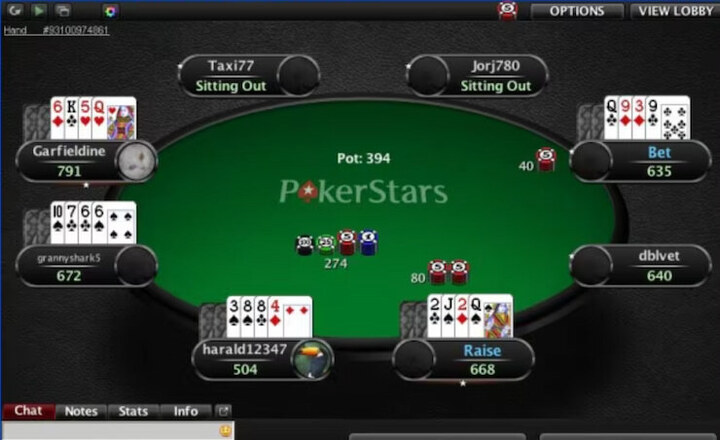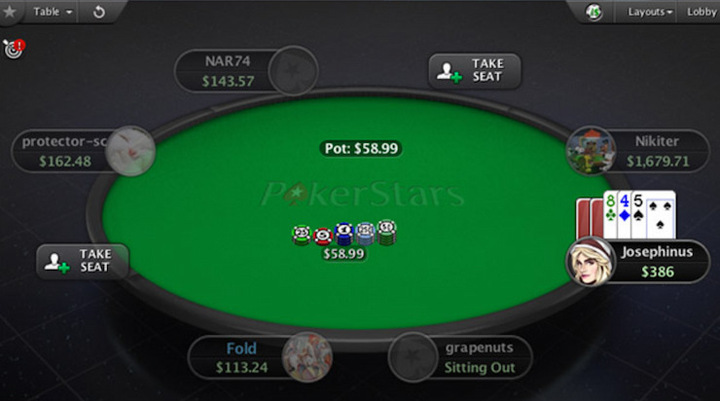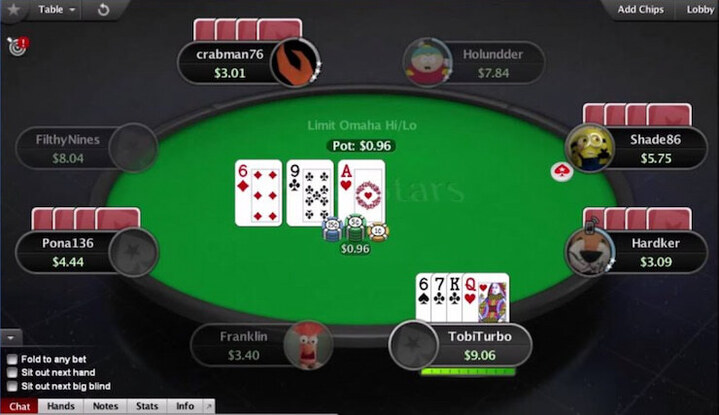7 Card Stud Poker Guide for 2024

7 Card Stud was once the most popular poker game in the United States, enjoying widespread popularity before being overtaken by Texas hold’em. Despite losing its crown as the ultimate poker game, it remains a beloved game among many poker fans and is still widely played.
This article will explore what Seven Card stud is, breaking down all the rules and gameplay. We’ll also share some top strategies and tips to help you enhance your Seven-card Stud performance. Finally, we’ll examine how this poker variant compares to other popular poker formats.
What is 7 Card Stud?Seven-card stud has a storied history that dates back to the American Civil War, when poker gained widespread popularity across the US with soldiers. Stud became an “official” game when it featured The American Hoyle: The Gentleman’s Handbook of Games.
In the early twentieth century, 7 Card Stud became the most popular stud poker variant, and it remained one of the most popular poker games until around the 1970s, which saw the rise of Texas Hold’em.
The aim of 7 Card Stud poker is the same as most poker games: your goal is to make the best-ranking poker hand. The hand rankings are the same as in other poker variants. The most significant difference between 7 Card Stud rules and games like Omaha and Texas Hold’em is that there are no community cards, and players are dealt seven cards, four being face-up and three face-down.
7 Card Stud Hands RankingIf you’ve ever played any type of poker, you’ll probably already know the 7 card stud hands ranking as standard rankings are the same as what would find in Texas Hold’em. If you are new to poker or just need a quick refresher, you can view the rankings in descending order in the table below.
Hand Description Approximate odds Royal Flush A, K, Q, J,10 of the same suit 1 in 31,000 Straight Flush Any five consecutive cards of the same suit, e.g., 4h, 5h,6h, 7h, 8h 1 in 3,600 Four of a kind Four cards of the same rank e.g. 6s, 6d, 6h, 6c 1 in 600 Full house A three-of-a-kind and a pair 7h, 7d, Jd, Jc, Js 1 in 38 Flush Any five cards of the same suit 2h, 5,h, 7,h,10h, Ah 1 in 32 Straight Five consecutive cards of any suit, e.g. 7d, 8h, 9h, 10d, Js 1 in 21 Three of a kind Three cards of the same rank, e.g., Qs, Qh, Qc 1 in 6 Two pair Two sets of pairs, e.g., Jh, Jd, 9c, 9h 1 in 3.5 Pair Two cards of the same rank e,g. Kh, Kd 1 in 1.5 High card The highest-ranked card N/A How to Play 7 Card Stud – Understanding the RulesDespite having the same hand rankings, 7-Card Stud poker rules differ quite a lot from the most popular variations at online poker sites like Hold’em. Firstly, in 7-Card Stud, there are no community cards. In 7 Cards stud players start with three cards, two dealt face-down and one dealt face-up. Each 7-Card Stud dealing and betting round is referred to as a street, and the first round is known as the third street (because players have three cards).
In the fourth, fifth, and sixth streets, players are dealt one face card each, so after the sixth street, players will have six cards: four up cards, which everyone can see, and two down cards. In the final seventh street, players receive one final card face down before a final round of betting and the showdown if more than two players remain.
How to Deal Seven-Card StudTo help you better understand the rules for rules for 7 card stud, we will break down exactly how to deal Seven Card Stud and look at each stage in a hand.
Ante AnteBefore dealing in 7 Card Stud, players at the table post an ante. The amount of the ante depends on the stakes, but it is usually around 10-20% of the small bet size, so in a $5/10 limit game, the ante will likely be around $0.50-$1.
The Deal The DealOnce all antes are posted, players are dealt three cards. The first two cards are dealt facedown and are known as hole cards or down cards, and the last card is dealt face-up and is known as the door card.
Bring-in Bring-inWhichever player has the lowest-ranking door card must place the “bring-in” bet, which is varies but is roughly about half of the small bet size, so in a $5/10 game the bring-in will be $2.50. The player that brings-in may also complete the bet by posting the entire small bet amount.
If two players have the same ranking hand, it’s based on suits, and the strength of the suit goes in Alphabetical order (clubs, diamonds, hearts, spades), with clubs being the weakest and spades being the strongest.
First Betting Round First Betting RoundAfter the bring-in has been posted, the action continues clockwise around the table. Players can either fold, call the bring-in, or raise. Because 7-card stud is usually a limit game, the raise in the third street (first betting round) and the fourth street is limited to the small bet amount, so in a $5/$10 game, the bet can only be raised to $5.
Fourth Street Fourth StreetEach remaining player is dealt a second face-up card. Another betting round begins with the person showing the highest-ranking poker hand (from their face-up cards only) the first to act. Like in the third street, players are limited in raising a maximum of a small bet amount. However, players can wager the big bet amount if they pair their door card.
Fifth Street Fifth StreetAny remaining players are dealt a third face-up card, so they now have a total of five cards (three face-up and two hole cards). Another round of betting starts with the player showing the best hand. The raising and betting standards are typically raised to the big bet limit in the fifth street and remain like this until the end of the hand.
Sixth Street Sixth StreetPlayers are dealt a fourth face-up card, and another betting round commences with the player with the highest ranking hand showing.
Seventh Street (The River) and Showdown Seventh Street (The River) and ShowdownThe remaining players are dealt the 7th and final card face-down and now have three hole cards and four face-up cards. A final round of betting begins again, starting with the player with the highest ranking hand showing. If more than one player remains after this round of betting, players reveal their hand, and the player with the best ranking hand wins the pot.
7 Card Stud Games VariationsNow that you know precisely what Seven Card Stud is, let’s examine some popular variations of the game.
7 Card Stud Hi-Lo
7 Cards Stud Hi Lo, also known as 7 Card Stud Eight or Better, is a split pot version of regular 7 stud. Like in a standard game, the pot is split between the person with the highest-ranking hand, but the other half of the pot goes to the player with the lowest-ranking hand.
The low hand must contain five cards of rank 8 or lower to qualify, hence the name “eight or better.” The gameplay and betting rules are exactly the same as in normal 7 card stud with the same number of streets and betting limits.
Razz
Razz uses the same standard Seven Card stud rules, except the winner is whoever has the lowest-ranking poker hand. The game follows the same 7 Card Stud dealing structure, and there are the same number of streets. Straights and flushes do not count against you, so the best possible hand in Razz is A, 2, 3, 4, 5, which is known as a “wheel”.
HORSE
Horse is not a 7 card stud game per se; it is a multi-game form of poker that incorporates five different poker variations, which are:
- H – Hold’em (Texas)
- O – Omaha
- R – Razz
- S – Seven Card stud
- E – Eights or Better (7 card stud Hi Lo)
HORSE starts with players playing Texas Hold’em, and the game changes after a set number of hands or time period. All of the games are typically played in limit format but are sometimes played with different betting structures.
Seven Card Stud Cash Games vs TournamentsLike most variants of poker, 7-Card Stud is available on poker apps and desktop sites in cash games or tournaments. We examine how these two ways of playing the game differ.
Cash GamesThe most significant difference between 7 card stud poker games and tournaments is that chips have a real monetary value, so whatever amount of chips you win or lose, you lose or win that amount of cash.
You can join a table whenever you want and play for as long or as little as you wish. You can also buy more chips at any point, so if you are low-stacked or have nothing left, you can just top up. The stakes also always remain the same at cash games, unlike tournaments, where stakes will periodically increase.
TournamentsIn Seven Card Stud poker tournaments, all players pay a set buy-in amount and start with an equal amount of chips. You are eliminated when you have no chips left (although some tournaments offer rebuys).
Tournaments are played until all but one player has been eliminated, and stakes increase to ensure that tournaments don’t go on for days as stacks increase. Typically, 10-20% of players “finish in the money” and win a cash prize, with first place taking roughly 30-50% of the total prize pool.
7 Card Stud TipsSeven-card stud offers a very different challenge to other variants of the game found at poker online casinos, like Hold’em and Omaha, because you can see many of the cards other players hold. This means that Seven Card Stud strategies are often different from other poker strategies. Here are some key differences to consider, and here are our top 5 professional 7 Card Stud tips on how to improve your performance.
Tip #1: Read the Board Tip #1: Read the BoardOne of the most critical elements of 7 Card Stud is reading the board, which means analyzing the upcards on the table, assessing how what’s showing can impact the probability of drawing the cards you need, and recognizing what cards might improve your opponent’s hand.
Tip #2: Keep Track of Folded Cards Tip #2: Keep Track of Folded CardsIt’s essential to keep track of cards folded by other players for the same reason as reading the board, which is essential in that it gives an idea of the probability of hitting the cards you need.
If you have four hearts and are looking for a flush draw but have seen four hearts already folded, then the probability of a heart coming out is significantly reduced.
On the other hand, if you’ve seen no hearts folded, then the likelihood of drawing one is relatively high. This is relatively easy to do when playing Seven Card Stud at offshore poker sites, as you can write it down, but when playing live, you will have to try to remember the cards already folded.
Tip #3: Don’t Complete the Bet on Bring-in Tip #3: Don’t Complete the Bet on Bring-inIf you have to post the bring-in bet, you have the option to “complete” the bet, which means betting the maximum amount. In most cases, it’s best to avoid this, and you should stick to posting the minimum amount. This is because you are out of position and have little information to work with.
If you have a moderate hand or some possible draws, keeping the bet small is in your best interest as it gives you the chance to see the Fourth Street for fewer chips. If you have a strong hand, posting the bring-in misleads your opponents about your hand strength, and you could see them commit more chips to the pot later, so it’s almost always in your best interest not to “complete” the bet.
Tip #4: Call on the River Tip #4: Call on the RiverMost of the time, if you are still in the hand come the river, it’s usually going to be worth calling a bet, even if you think you might have the losing hand. This is because you are getting great pot odds. If each street has seen a bet from you and at least one other player, you’re going to be getting odds of around 6-8 to 1, so it’s definitely worth calling most of the time.
There are exceptions to this. Obviously, if you are sure you are beaten, i.e., your opponents’ upcards beat any hand you have, then fold. Also, if there’s been a lot of checks up until the river, you’re only getting 2 or 3 to 1 odds, and you are pretty sure you’re behind, then folding may be a good option.
Tip #5: Manage Your Bankroll Tip #5: Manage Your BankrollPoker legend V.P Pappy once said, “Gambling is not about how well you play the games; it’s really about how well you handle your money.” This is some of the best advice ever given about gambling, highlighting that poker bankroll management is crucial for success.
If you are playing cash games, you should have at least 30-50 buy-ins, and if you are playing tournaments, you should have at least 100 buy-ins. This reduces the risk of going broke and gives you the best chance of making your money back.
7 Card Stud vs Texas Hold’emFor most of the twentieth century, stud poker was the most popular poker game, but Texas Hold’em surpassed it in the 1970s and has been the most played since then.
The most significant difference between Texas Hold’em Poker and Seven Card Stud is that Hold’em is played with community cards. These are cards played into the middle of the table that all players can use combined with their hole cards. In a 7-Card Stud deal, players receive seven cards each and can only use their individual cards to make their hands.
The fact that there are no community cards in Seven-card Stud, but you can see up to four of your opponent’s cards, means that what makes a good hand is much more variable in Seven-card Stud.

For example, starting with an A, K in Texas Hold’em is always a strong hand, but in stud, it depends on what other cards players are showing. If you have an A and a K in the hole, in stud, but there are two Aces and a King showing on the board in other players’ hands, then the strength of your A and K is reduced significantly.
7 card stud betting rules also differ significantly from those in Hold’em. Firstly, stud is almost exclusively played in limit format, but Hold’em is played in all betting formats but most commonly played in pot limit or no limit, which leads to more aggressive plays. In addition, there’s a maximum of four betting rounds in Hold’em, but up to five in 7 Card Stud.
Finally, in 7-card stud poker rules, the position of players isn’t set and depends on who has the weakest hand showing in the first round and the strongest in subsequent hands. So, you can be first to act in one round, but in the next, depending on the cards dealt, you may be last to act.
Other Useful Guides for Poker Players The Bottom LineUnderstanding Seven Card Stud’s meaning and Seven Card Stud rules opens up a whole new world of poker opportunities. The game offers a very different challenge to Omaha and Hold’em.
And with several variations of the game, there are even further challenges within the game. If you’re new to poker or looking for a change from Hold’em games, we recommend trying out Seven Card Stud at a top online poker site, such as CoinPoker.
Editors' ChoiceSign up To Claim 150% Deposit Bonus Up To $2,000
- The main CSOP tournament series guarantees $1,000,000 in prize money
- Low and high-stakes tables are always available, 33% Rakeback
- No KYC process, decentralized blockchain poker
If you have never played before, you may be wondering, “How do you play 7-card stud?”. Well, the aim of the game is the same as that of other poker variants, which is to either be the last player in the hand or have the highest-ranking poker hand. In the rules of rules of 7 card stud.
What is 7 card stud poker?7-Card Stud poker is a classic poker variant in which each player is dealt 7 cards. The aim is to make the best possible hand from these seven cards. Unlike other popular variants, there are no community cards, and 4 of the 7 cards players have are dealt face up.
How do you deal 7 card stud?How to deal 7 Card Stud is considerably different from Hold’em and Omaha. In 7 card stud, players are initially dealt three cards, 2 face-down and one face-up. After that, players are dealt one card in each round (or street). The fourth, fifth, and sixth cards are dealt face up, and the final card in the seventh street is dealt face down.
How to win at 7 Card Stud poker?To win 7-Card Stud poker games, players must either be the last player left in the hand after all other players fold or have the highest-ranking poker hand.
How many players can play 7 Card Stud?7 Card Stud games can be played with two to eight players. However, a special rule may be required for the last cards dealt with eight players if no players have folded.
Responsible GamblingIt’s crucial to practice responsible gambling to prevent potential risks associated with gambling addiction, such as financial troubles and mental health concerns. If you think you might be facing a gambling issue, it’s essential to seek help. Below are some resources that can provide support in addressing the issue.
- https://www.gam-anon.org/
- https://gamblersanonymous.org/ga/hotlines
- https://www.ncpgambling.org/help-treatment/
The post 7 Card Stud Poker Guide for 2024 appeared first on ReadWrite.
